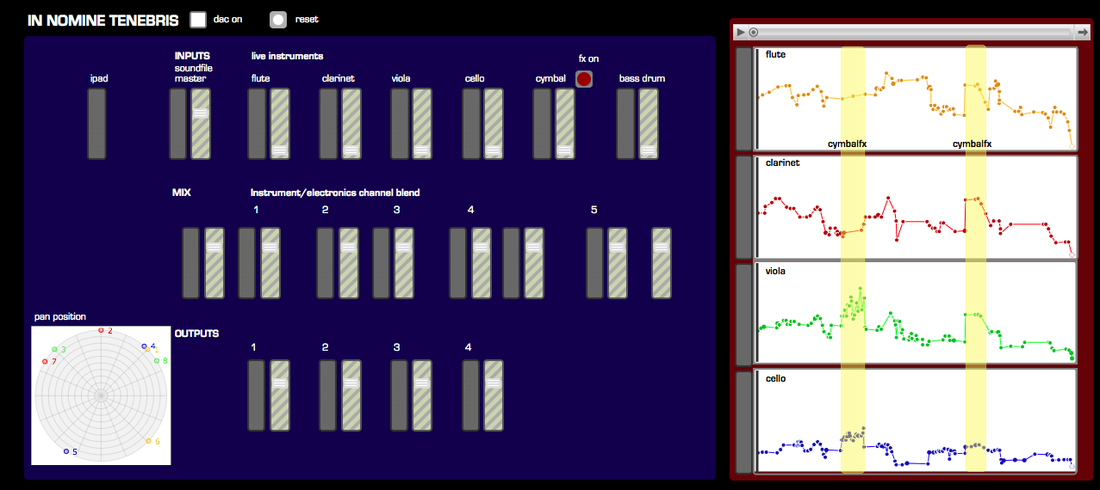| The opening of the cello part for in nomine tenebris | The score for in nomine tenebris was created from a sonogram of Giacinto Scelci's organ work In Nomine Lucis that was stretched, warped and distorted in the visual domain using Photoshop and Illustrator. Parts for the five instruments were created by colouring and annotating features of the sonogram (the opening of the cello part is to the left). This allows to performers to acoustically recreate minute and continuous changes in pitch, dynamic and timbre by following the height, thickness, shape and shade of the image. The players perform the work from scrolling scores synchronised in the Decibel Scoreplayer. |
in nomine tenebris makes use of the new OSC communication features of the Scoreplayer. The addition of OSC communication allows for the coordination of functions that were previously independently conducted by the iPad and computer, most crucially audio processing. The current implementation reports the score position via OSC as a number between 0 and 1 (where 0 is the first frame of the score and 1 is the last) in the format /Control/Tick 0.445. The amount of time elapsed can therefore be calculated by multiplying this number by the duration of the score. In this way audio processing can be cued by the position of the score itself.
Conversely, the score can be repositioned by sending a /Control/Seek 0.5 message to the iPad (see below). Other currently implemented control commands are /Control/Play (start score), /Control/Reset (stop and reset score) and /Control/SetDuration (change the duration of the work). Additional commands will be added for the requirements of individual scores.
Conversely, the score can be repositioned by sending a /Control/Seek 0.5 message to the iPad (see below). Other currently implemented control commands are /Control/Play (start score), /Control/Reset (stop and reset score) and /Control/SetDuration (change the duration of the work). Additional commands will be added for the requirements of individual scores.
in nomine tenebris uses this function to align the scrolling score (based on a sonoogram) with a recording its a re-sonification, by using the position of the audio file (reported by snapshot~) to control the position of the score. The contours of four of the instrumental parts are used to determine the spatialization of the audio over 8 speakers (see below)
The audio processing patch for in nomine tenebris
Instrumental part contours (Left) used to control spatialisation of the audio image (Right).










 RSS Feed
RSS Feed
